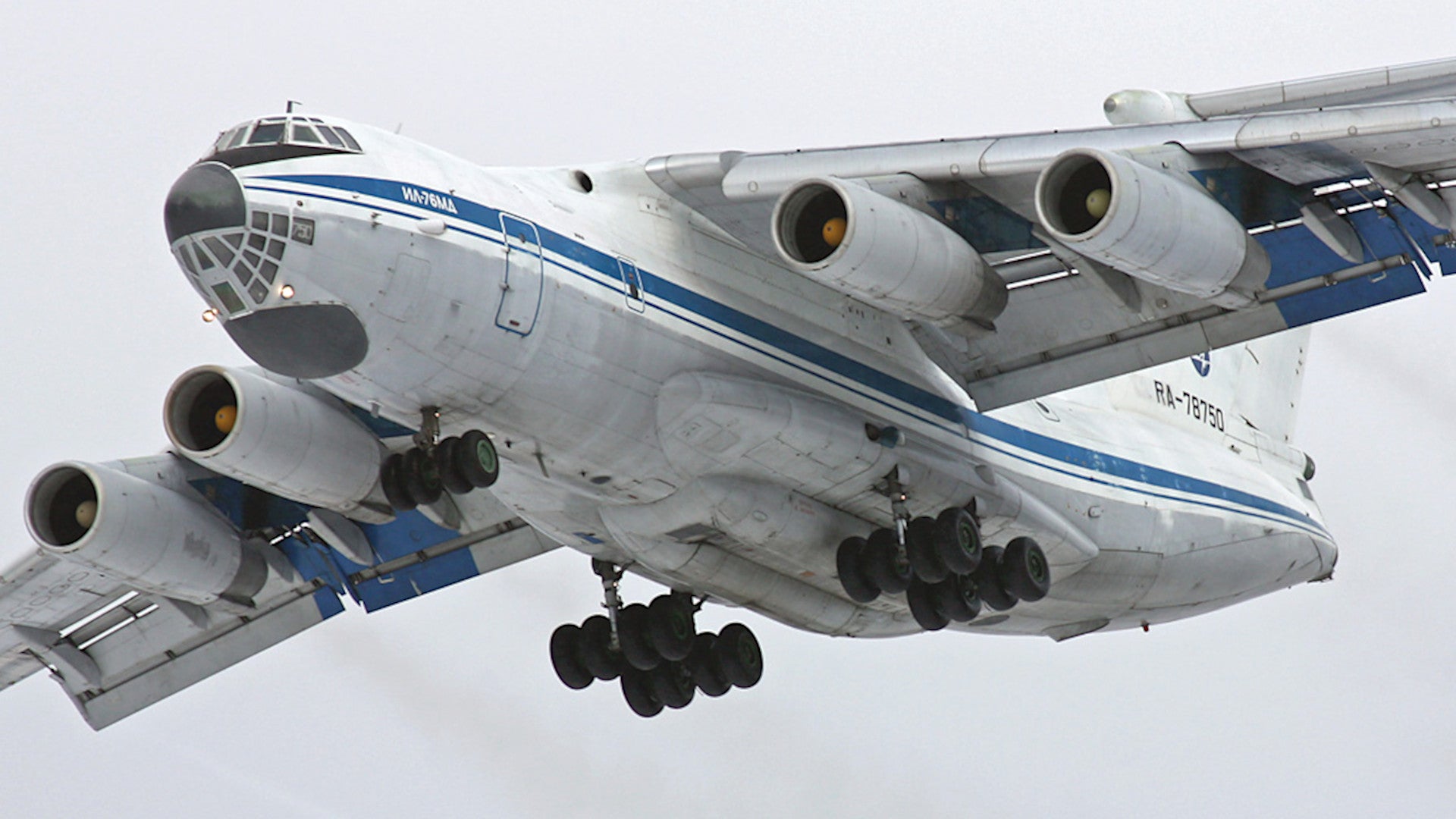Russia’s Gromov Flight Research Institute has revealed a concept for a system that it says will allow an Il-76 Candid airlifter to launch and recover hypersonic flight test vehicles using an extendable arm mounted in its main cargo bay. While similar in some respects the U.S. Defense Advanced Research Projects Agency’s Gremlins program, it’s not at all clear how the Russian system would actually work, especially when trying to grab super-fast-flying test vehicles straight out of mid-air.
Gromov, also known by its Russian language acronym LII, presented concept art for what it blandly titled a “universal system with a booster for high-speed UAV [unmanned aerial vehicle] tests” at the biennial MAKS air show outside of Moscow. The show, which is going on at Zhukovsky International Airport, where Gromov is also based, formally opened on Aug. 27, 2019. There is no indication that there is an actual example of this system that is at all functional and available for use in any capacity.
The core of the system itself is a modular “universal booster,” or UB, which can accommodate either a high- or low-thrust rocket motor, depending on the test parameters. “The system is designed for flight research and tests on a universal flying test-bed of objects with a hypersonic ramjet engine (scramjet),” the placard at MAKS explained.
The display shows three sizes of scramjet-powered vehicles that can fit on the UB, but it is possible that it could support other hypersonic flight testing, as well. The printed description says that the booster can accommodate flight test articles weighing up to three tons and just shy of 20 feet long. With the larger rocket motor in place, the UB should be able to propel any such object to at least Mach 3 or 4, at which point, if it is powered by a scramjet, the engine would be able to take over.


Then there’s the modified Il-76 testbed. It “provides an air start, towing in the airflow, reboarding of flight test objects, [that are] different in purpose and mass-dimensional characteristics, including objects with a scramjet,” the displays read.
The graphic shows a cutaway of the Il-76 with a crane-like arm that is affixed to the floor in the center of the cargo bay. It then extends out through the Il-76 Candid’s rear clamshell doors and folds down into the slipstream below the aircraft. Based on the description from Gromov, the aircraft could simply fly with it in that position to gather basic aerodynamic data or release it for a full flight test.

However, there are absolutely no details on how the aircraft would go about rendezvousing with a test vehicle after a flight or recovering it. There a number of historical examples of how one might go about doing this, typically involving extendable grabbier-like arms.
During the 1950s, the U.S. Air Force experimented extensively with deploying and retrieving fighter and reconnaissance aircraft from modified bombers to extend the smaller aircraft’s range. There were also tests of tiny “parasite” escort fighter, the XF-85A Goblin, which the service hoped might offer bombers an organic fighter defense during long-range missions.

In the 1970s, Boeing revived the concept of an Airborne Aircraft Carrier (AAC), which would have used a modified 747 airliner to launch and recover 10 “microfighters.” It would have also had a boom in order to refuel them in mid-air.

The unmanned aircraft that Dynetics is developing now for DARPA’s Gremlins program have a probe that locks into a towed drogue. The recovering aircraft – presently a specially configured C-130 Hercules cargo aircraft – then reels into position so that a grabber arm can pull it inside.

But recovering subsonic manned or unmanned aircraft is worlds different from trying to snatch a hypersonic vehicle, which, by definition is designed to fly at speeds of Mach 5 or more, out of the air. It would have to dramatically decelerate for the Il-76 to even have a chance at retrieving it. It’s not even clear if a hypersonic vehicle would be able to remain stable and airborne at such a low speed.
If Gromov can make the arrangement work, the Russians might gain some extra flexibility when it comes to flight testing hypersonic unmanned aircraft and weapons. The U.S. Air Force has similarly begun buying air-launched Generation Orbit X-60A hypersonic test vehicles specifically in order to help with the rapid testing of systems and materials at hypersonic speeds. However, these are expendable and need a specially configured launching aircraft.

If it turns out the arm is only capable of deploying test articles into the slipstream or releasing them, that still might be useful enough to justify the expense of developing and installing the conversion. It is also possible that Gromov could adapt it to work with subsonic unmanned aircraft, along the lines of America’s Gremlins, or some other kind of optionally expendable cruise missile-like drones. The extra standoff range that hypersonic systems offer make them particularly well suited to employment from non-stealthy platforms, such as a modified Candid, in general, since it means they can stay relatively far away from enemy air defenses during launch and recover.
Even so, modifying Il-76s with the grabber arm system would seem far more complicated and risky than simply integrating various hypersonic weapons onto existing platforms, including Russia’s strategic Tu-95 Bear and Tu-160 Blackjack bombers and shorter-range Tu-22M Backfire bomber. The Russians have already modified a number of MiG-31 heavy interceptors to carry the Kh-47M2 Kinzhal air-launched hypersonic missile.
It will be certainly interesting to see if the Il-76 hypersonic air-launch and recovery testbed ever actually emerges and what its capabilities might be if it does.
Author’s note: A big thank you to Michael Jerdev for providing the photos of the display from MAKS. Make sure to follow him on Twitter at @Muxelaero.
Contact the author: joe@thedrive.com
